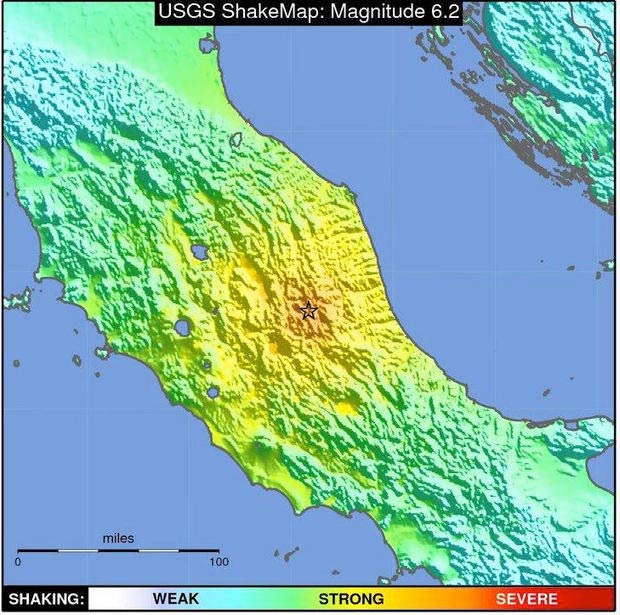In the early hours of August 24, 2016, 100 km northeast of Rome, a strong and shallow magnitude 6.2 earthquake and a series of aftershocks rattled a portion of the Apennine Mountains in central Italy, wreaking disaster on a cluster of towns and villages, particularly the areas of Amatrice, Accumoli, Norcia, and Pescara del Tronto. Italy is broadly recognized as the most seismically active country in Europe due to its location on the Africa and Eurasia tectonic plates. The collision of these massive plates created the Apennine Mountains, and when quakes strike in this area, outcomes can be catastrophic.

The August 24 earthquake was a deadly one, but not the worst in the country's long history of temblors. Over the last 2,000 years, more than 400 damaging earthquakes have been recorded in the country. The location of the August 24 quake lies within a seismic gap between the 1997 Umbria and Marche M6.0 earthquake and the 2009 L'Aquila M6.3 earthquake. The Umbria and Marche event occurred about 50 km north-northwest of the August 24, 2016 temblor, killed 11 people, and damaged approximately 8,000 homes. The devastating temblor that struck L'Aquila 45 km south-southeast of the August 24, 2016 quake killed hundreds of people, damaged thousands of structures, and caused billions in insurable losses. The 2009 earthquake was the deadliest in Italy's history since 1908, when an M7.1 earthquake followed by a tsunami killed more than 80,000 people in the regions of Sicily and Reggio Calabria.
Shallow earthquakes are fairly common in the Apennine Mountains due to the number of faults that run along the range. According to the United States Geological Survey (USGS), the plates are tectonically and geologically complex and the Eurasia plate moves toward the northeast with respect to Africa at a rate of 24 mm per year. However, based on USGS reports, this temblor was not caused by the uplifting process of the faults. Instead, it was triggered by movement in the Tyrrhenian Basin, which is a seismically active area below the Mediterranean Sea that is gradually opening up. Shallow quakes are generally more destructive than deeper ones because the energy from the rupture is released closer to the surface, creating stronger shaking closer to structures.
It is often said that earthquakes don't kill people; buildings and their contents do. The buildings in the towns devastated by the August 24 temblor were noted for their traditional unreinforced masonry construction. Many of the destroyed structures were much more than 100 years old, were built right up against one another, and were characterized by thick walls made of large rocks and rubble held together with weak mortar. Their floors were likely wood and poorly fastened to the walls. Such structures have often had additional rooms and/or floors added haphazardly over the years and, as a result, developed L-shaped or irregular configurations. None of these design characteristic withstands shaking well.
Efforts to identify distinct seismic zones throughout Italy and the development of modern building codes for the country came after the M6.5 Friuli earthquake in 1976. The widespread destruction of older, unreinforced masonry buildings in this quake also launched the development of technical documents subsequently used to retrofit such buildings and design new and more resilient ones. The damage seen after the August 24 earthquake highlights how few structures in this region have benefited from any such retrofitting. However, one town in the region—Norcia—suffered no casualties in the recent earthquake due to funding and retrofitting efforts in the wake of a 1997 earthquake that that struck there. Hopefully, this most recent tragedy will increase retrofitting efforts in other towns to make unreinforced masonry structures safer for their occupants and increase earthquake resiliency.



